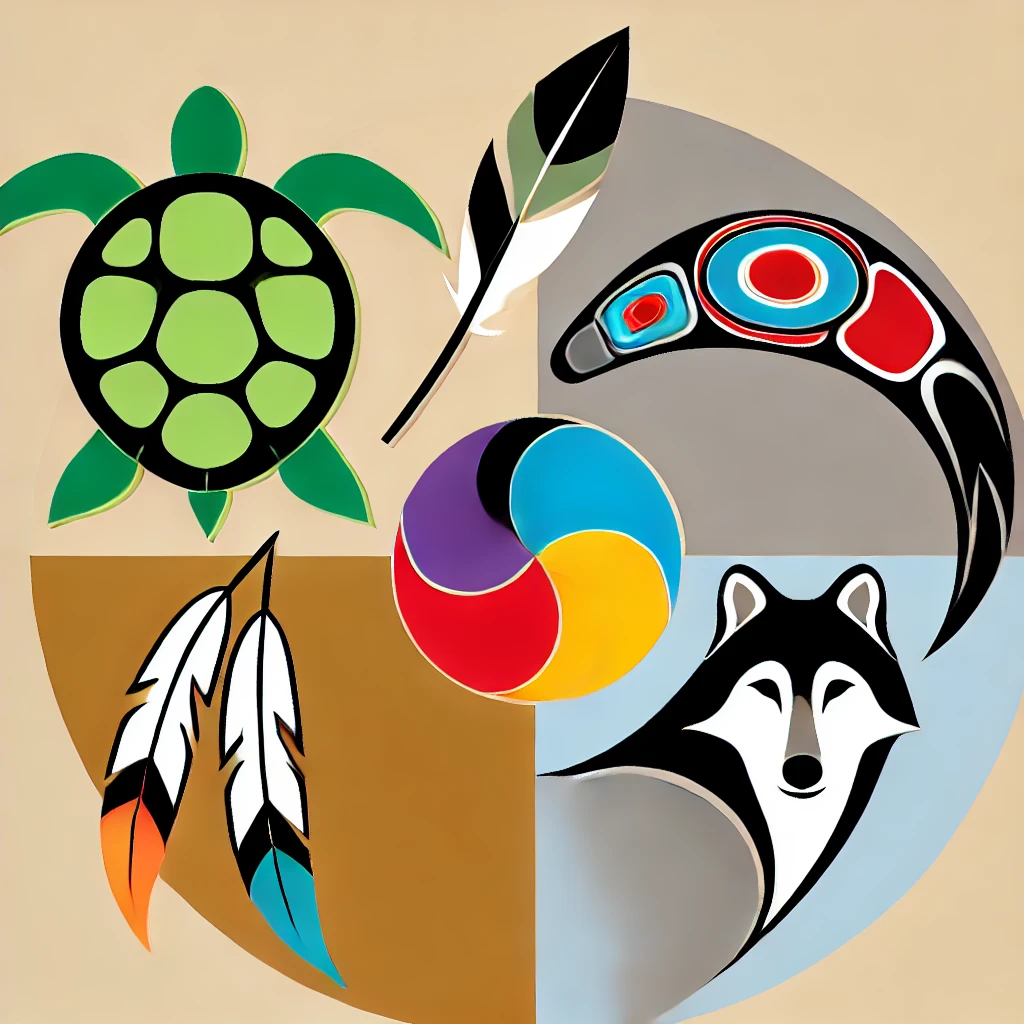
Secrets of Indigenous Symbols: Understanding Their Meaning and Spiritual Impact
Share
Indigenous art is distinguished by a unique symbolism. More than just aesthetic motifs, each symbol has a deep meaning and represents a spiritual connection with nature, community and ancestors. In this article, we explore the secrets of some Indigenous symbols and their role in traditional crafts, to help you better understand and appreciate Indigenous art objects.
The importance of symbols in indigenous culture
Symbols are central to Indigenous cultures, acting as bridges between the physical and spiritual worlds. Each of these designs is an expression of beliefs, values, and teachings passed down through generations. Indigenous artisans use these symbols to continue traditions, honoring their ancestors and their sacred connection to the Earth.
Popular Aboriginal Symbols and Their Meanings
1. The turtle
The turtle is a universal symbol among many Indigenous nations. It represents Mother Earth, the force of life, and perseverance. In some cultures, the turtle carries the world on its back, recalling the delicate balance between man and nature. Objects adorned with the turtle often symbolize protection, longevity, and harmony.
2. The wolf
The wolf embodies loyalty, courage, and community spirit. A spirit animal and guide, it is often represented in jewelry and artwork to remind us of the importance of unity and family. Wearing a wolf symbol is a way to show one's belonging to a community and to affirm one's connection to one's loved ones.
3. The Eagle
The eagle is highly respected for its connection to the spirit world and its role as a messenger between heaven and earth. It symbolizes wisdom, courage, and vision. In crafts, eagle feathers are often incorporated into ritual and spiritual objects to represent the connection between the human world and the divine.
4. The Medicine Wheel
The medicine wheel is a symbol of balance, healing, and spiritual growth. It is divided into four quadrants, each representing a direction, a season, and an aspect of life. Used for meditation and reconnecting with oneself, the medicine wheel is a representation of harmony and the cycle of life.
5. The coyote
The coyote, a complex symbolic figure, embodies adaptation, transformation, and intelligence. In crafts, it can serve as a reminder of the importance of remaining flexible and seeing life from different perspectives. Depictions of the coyote are often present in stories and artistic objects, emphasizing the wisdom that comes from experience and knowledge.
How Symbols Enrich Indigenous Crafts
The integration of symbols into Indigenous crafts is not only done for their aesthetics, but also for the spiritual message they carry. A dreamcatcher adorned with eagle feathers, for example, represents not only a beautiful object, but a sacred connection to the spirit world. Similarly, a necklace or bracelet with the symbol of the wolf can be worn to strengthen the spirit spirit and recall family values.
Indigenous artisans create works that honor the Earth, their ancestors and their spiritual values. Each creation thus becomes a means of transmitting cultural knowledge, affirming their identity and preserving symbols that carry history.
The Spiritual Impact of Indigenous Symbols Today
Today, many people turn to Indigenous symbols to find meaning, comfort, and a reminder of the importance of nature and spirituality in their lives. Indigenous art objects, marked by these symbols, invite a reconnection with essential values and a return to harmony with the world.
Owning an object decorated with indigenous symbols is not just a material thing: it is a spiritual choice that brings significant depth. These symbols act as daily reminders of values such as protecting nature, the wisdom of the elders and respecting all forms of life.
Sources and references
1. The Wisdom of Indigenous Peoples: Traditions and Beliefs
2. Dictionary of Native American Symbols
3. Indigenous Art and Spirituality














